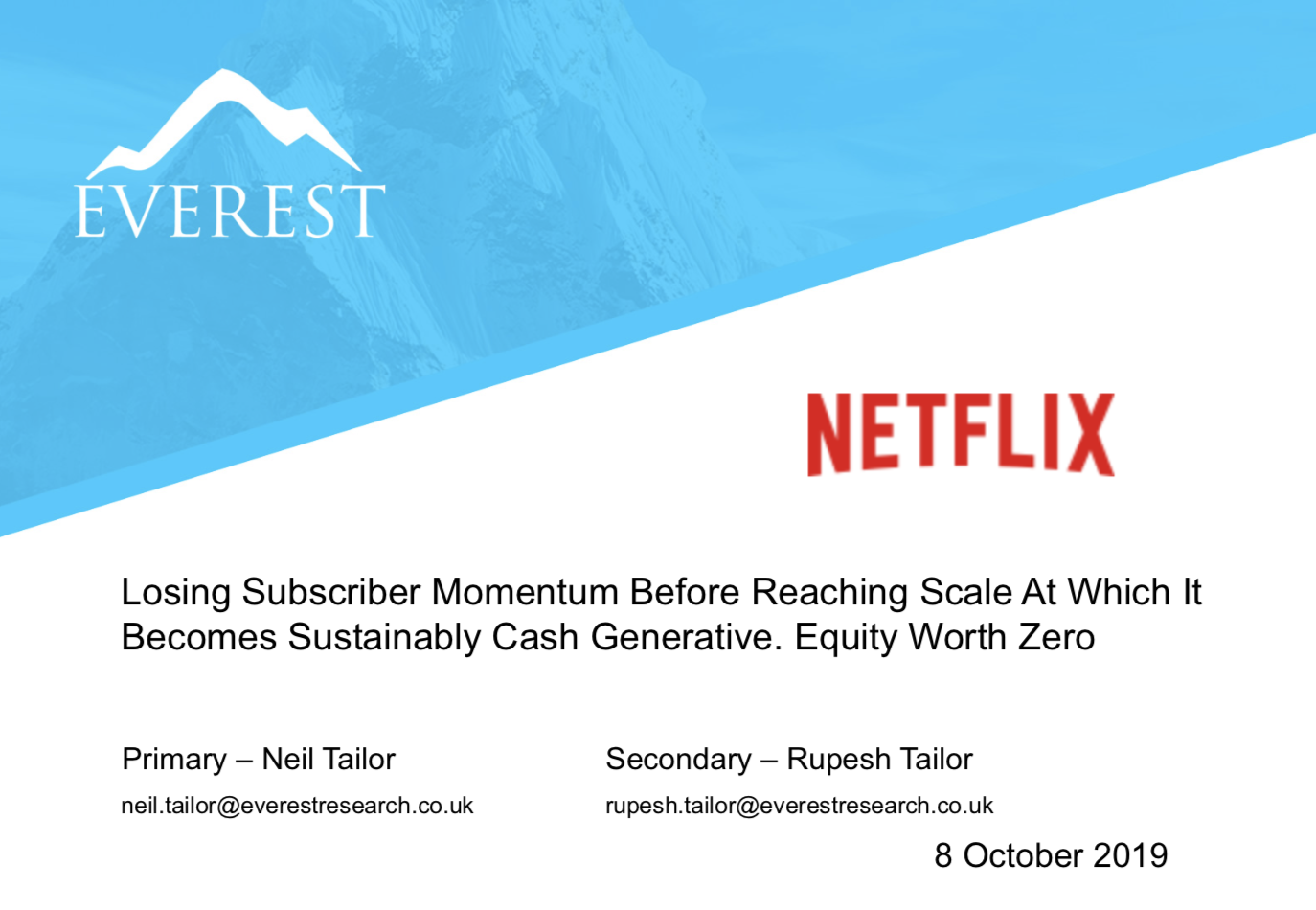Sectors > Top Reports > Netflix Memo 081019
Netflix Memo 081019
Netflix. Losing Subscriber Momentum Before Reaching Scale At Which It Becomes Sustainably Cash Generative. Equity Worth Zero
PUBLISHED: 08 October 2019
PAGES: 222
PRODUCT CODE: NFLX0001
SUBMARKET:
Netflix, Top Reports, Top Reports,
£2,670.00
Why Read?
- Understand how and why Netflix’s net subscriber additions per $ of “growth” content investment have fallen
- Understand why this deteriorating subscriber number elasticity to content investment means that Netflix likely cannot “grow” its way to positive FCF
- Understand how Disney (through Disney+, Hulu and ESPN) is likely to emerge as a major global rival in streaming services and how this will restrict Netflix’s levers to improve its FCF
- Understand why our base case equity valuation of Netflix is zero
- Understand alternative (positive) scenarios if Netflix’s historic relationship between subscriber numbers and content investment / amortization were to re-establish
- Understand why Netflix is trapped in its “growth” content investment strategy as “steady state” FCF is increasingly negative and Netflix cannot afford for investors to see this should it slow down
- Understand how Netflix’s Permitted Liens carve-out to its limitation on liens covenant allows for substantial priming of its senior unsecured bonds with respect to content assets
- Understand the value of Netflix’s content assets
What’s New?
- Detailed examination of historic relationships between subscriber numbers / net subscriber additions and content investment / amortization plus marketing expense and why there has been a structural (negative) break in this relationship which we expect to deteriorate further
- Analysis of Netflix’s steady state FCF, removing the effects of “growth” content investment and associated net subscriber additions
- Comparative “return” on content analysis versus streaming / production peers
- Break-even analysis / payback period on content investment
Questions Answered
- Will Netflix reach an “escape velocity” of net subscriber additions that allows it to sustainably generate sufficient positive FCF (soon enough) to justify its current valuation?
- How will intensifying competition in streaming impact Netflix’s ability to net add subscribers and its pricing power?
- What is the near term outlook for Q3 and Q4 2019 and 2020 net subscriber additions and does this make timing of shorts challenging?
- What proportion of Netflix’s viewing hours comes from third party licensed content (as opposed to Netflix Original / Exclusive content) and what will be the impact of losing much of its popular licensed content over time?
- What is Netflix’s “acquisition cost” per new subscriber in terms of the content investment and marketing expense needed to “acquire” a new subscriber and how much has this increased relative to average revenue per subscriber?
- Netflix is behaving like a major film studio in terms of its magnitude of content investment and production cost per episode / film. Yet a top film studio has many more revenue streams (cinema, Pay-TV, DVD / Blu-ray, merchandise, brand / image licensing, music rights licensing) to monetise content than a pure streaming service. Is Netflix offering a service at a price which does not cover its true costs?
- How large could Netflix’s global subscriber base ultimately be?
- What do Netflix’s market cap and equity implied volatility imply for its debt valuation?






